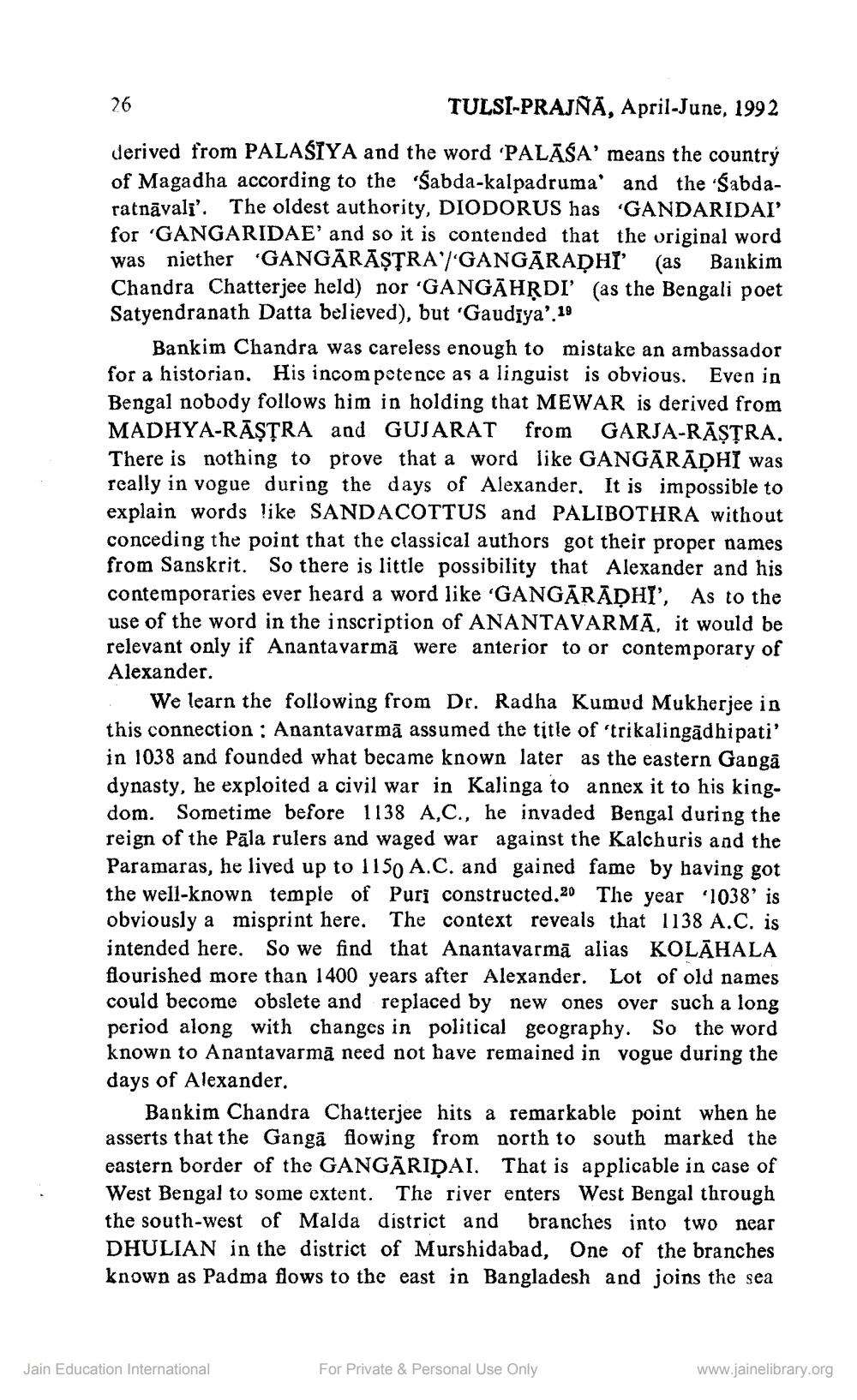________________
TULSI-PRAJÑA, April-June, 1992
derived from PALASIYA and the word 'PALASA' means the country of Magadha according to the 'Sabda-kalpadruma' and the 'Sabdaratnavali'. The oldest authority, DIODORUS has 'GANDARIDAI' for 'GANGARIDAE' and so it is contended that the original word was niether 'GANGĀRĀṢṬRA/GANGĀRADHI' (as Bankim Chandra Chatterjee held) nor 'GANGAHṚDI' (as the Bengali poet Satyendranath Datta believed), but 'Gaudiya'.19
26
Bankim Chandra was careless enough to mistake an ambassador for a historian. His incompetence as a linguist is obvious. Even in Bengal nobody follows him in holding that MEWAR is derived from MADHYA-RĀṢTRA and GUJARAT from GARJA-RAṢTRA. There is nothing to prove that a word like GANGARADHI was really in vogue during the days of Alexander. It is impossible to explain words like SANDACOTTUS and PALIBOTHRA without conceding the point that the classical authors got their proper names from Sanskrit. So there is little possibility that Alexander and his contemporaries ever heard a word like 'GANGĀRADHI', As to the use of the word in the inscription of ANANTAVARMA, it would be relevant only if Anantavarma were anterior to or contemporary of Alexander.
We learn the following from Dr. Radha Kumud Mukherjee in this connection: Anantavarma assumed the title of 'trikalingadhipati' in 1038 and founded what became known later as the eastern Ganga dynasty, he exploited a civil war in Kalinga to annex it to his kingdom. Sometime before 1138 A,C., he invaded Bengal during the reign of the Pāla rulers and waged war against the Kalchuris and the Paramaras, he lived up to 1150 A.C. and gained fame by having got the well-known temple of Puri constructed.20 The year '1038' is obviously a misprint here. The context reveals that 1138 A.C. is intended here. So we find that Anantavarmā alias KOLĀHALA flourished more than 1400 years after Alexander. Lot of old names could become obslete and replaced by new ones over such a long period along with changes in political geography. So the word known to Anantavarma need not have remained in vogue during the days of Alexander.
Bankim Chandra Chatterjee hits a remarkable point when he asserts that the Ganga flowing from north to south marked the eastern border of the GANGĀRIŅAI. applicable in case of West Bengal to some extent. The river West Bengal through the south-west of Malda district and branches into two near DHULIAN in the district of Murshidabad, One of the branches known as Padma flows to the east in Bangladesh and joins the sea
That is enters
Jain Education International
For Private & Personal Use Only
www.jainelibrary.org




